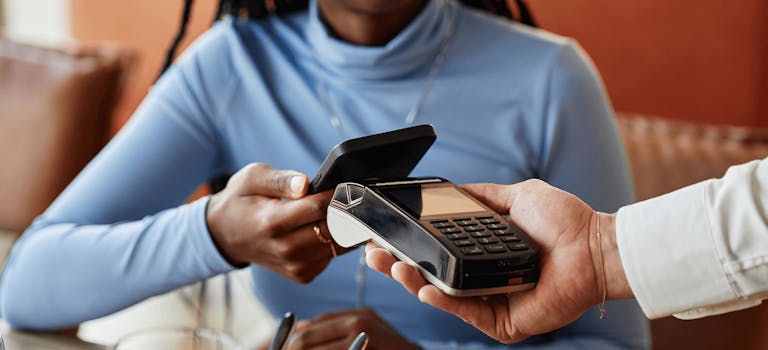
More than half of UK adults use mobile wallets - how to stay safe
13th Oct 2025

Stela
More people than ever are using their phones, watches and other devices to pay for things when they’re out and about. New figures from UK Finance show 57% of UK adults used a mobile wallet like Apple Pay or Google Pay in 2024 compared to just 42% the year before.
Adrian Buckle, head of research at UK Finance, said: “2024 was a year of firsts, all pointing to the growing shift towards digital payments – more than half of UK adults used mobile wallets, mobile banking overtook desktop as the main way people access their accounts, and cash fell below 10% of all payments.”
Mobile wallets are now a regular part of everyday life for millions, and their use is expected to keep growing.
Why mobile wallets are becoming so popular
Mobile wallets let you store your debit and credit cards on your phone or smartwatch. You can then use your device to pay in shops or online. People are adopting this method of payment for many reasons, including:
- convenience – you don’t need to carry your wallet anymore, as long as you have your phone, you can pay up
- speed – payments are quick and seamless especially when it comes to contactless purchases
- security – mobile wallets come with features like fingerprint or face ID, and you don’t have to worry about someone stealing your physical card
- all-in-one access – you don’t need to bring a bulky wallet; your credit cards, loyalty cards and even tickets to events can all go on your phone
It all boils down to one thing; mobile wallets are just quick and easy to use. They’re popular at home as well; you can scroll in bed and buy whatever you want right away. You don’t have to get up and look for your physical card to complete the purchase.
How to stay safe when using a mobile wallet
Mobile wallets are super convenient but there are still some risks to be aware of:
- lost or stolen devices – if someone gets hold of your phone and it’s not locked, they could try to make payments
- paying over public Wi-Fi networks – public Wi-Fi networks are prone to hacking attacks where hackers can steal sensitive info like your payment details
- scams and phishing attacks – scammers may try to trick you into giving away your login details or installing fake apps that steal information
However, there are ways to stay safe if you want to keep using your mobile wallet:
- use a strong screen lock – set up a PIN, fingerprint, or face ID to stop others from accessing your phone
- turn on remote tracking – features like “Find My iPhone” or “Find My Device” let you lock or erase your phone if it’s lost
- only download apps from trusted sources – stick to official app stores like the Apple App Store or Google Play.
- watch out for scams – don’t click on links in unexpected texts or emails
- keep your phone updated – software updates often include important security fixes.
- have a backup payment method – carry a card or some cash just in case your phone isn’t working
Digital wallets are here to stay. Contactless use is set to reach 43% of all payments in the UK by 2034, and mobile wallets use is expected to grow with people across all age groups using them more regularly. Projections suggest just 4% of all payments will be made using traditional methods like cash by 2034.
Embracing mobile wallets makes sense; they’re convenient and secure. But, as with any payment method, they come with their own unique risks. That just means we need to take precautions to stay safe when we use them.
< Back to articles
